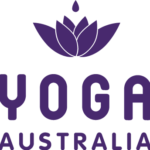Yoga
Yoga is a holistic approach to health and well-being. It increases flexibility, strength and stamina, whilst fostering relaxation, release from tension, self-awareness, emotional stability, and peace of mind. Yoga has gained a reputation for helping countless people deal with everyday stresses. These are achieved through the regular practice of a range of different techniques.
Research shows that relaxation-response techniques, such as yoga, could reduce the need for health care services by 43 percent. Yoga may also enhance performance in your chosen sport, reducing injury risk and increasing flexibility, balance and strength. Yoga is Australia’s fastest growing fitness activity with the popularity doubling since 2008 and research shows that one in 10 Australians currently practice yoga.
Historically, Yoga is recognised as an ancient system of philosophies, principles and practices derived from the Vedic tradition of India and the Himalayas, more than 2500 years ago. It is a system that recognises the multi-dimensional nature of the human person, and primarily relates to the nature and workings of the mind, based on experiential practice and self-enquiry.
Yoga is not about being ultra-flexible or standing on your head, but being completely present with the breath, mind and body – this is yoga.
The practice of yoga typically includes:
- Posture and movement
- Breath awareness and breathing exercises
- Relaxation; and
- Concentration and meditation
Different styles of yoga suit individuals differing needs. Some of the popular style of yoga enjoyed by Australians include:
- General Hatha
- Iyengar
- Ashtanga
- Satyananda
- Classical
- Vinyasa
- Bikram
- Dru & more
Yoga is the journey of the self, through the self, to the self
- The Bhagavad Gita
What to expect in Yoga practice
Yoga classes vary, depending on the style or tradition of the teacher or school. Participants may often practice on yoga/exercise mats. Yoga is taught by a trained teacher to suit the level of the individual, from beginner through to advanced practitioners who are very experienced.
A common yoga class typically includes:
- An introduction, possibly including some breathing exercises and/or relaxation
- A Physical warm up
- Yoga postures, movements and stretches
- Relaxation and/or meditation.
Meditation is usually an integral part of yoga and many yoga teachers may offer classes dedicated to the practice of meditation. Participants usually practise either on cushions on the floor, laying in a supine position, or seated on chairs. A dedicated meditation class typically includes:
- An introduction possibly including breathing exercises, relaxation and some inspirational readings
- Different mental focusing and meditation practices
- Returning to an outward focus and brief discussion
What is Yoga Therapy?
Yoga Therapy is the appropriate application of yoga teachings and practices in a therapeutic, one to one context to support rehabilitation and health. These private therapy sessions aim to improve function and help to prevent the occurrence or re-occurrence of underlying causes of illness.
The practice of yoga therapy requires specialised training and skill development to support the relationship between the client/student and therapist and to effect positive change for the individual.
Yoga therapy is informed by its sister science, Ayurveda. As part of a living tradition, yoga therapy continues to evolve and adapt to the cultural context in which it is practised, and today, it is also informed by contemporary health sciences. Its efficacy is supported by an increasing body of research evidence, which contributes to the growing understanding and acceptance of its value as a therapeutic discipline.
Content generously provided by Yoga Australia



